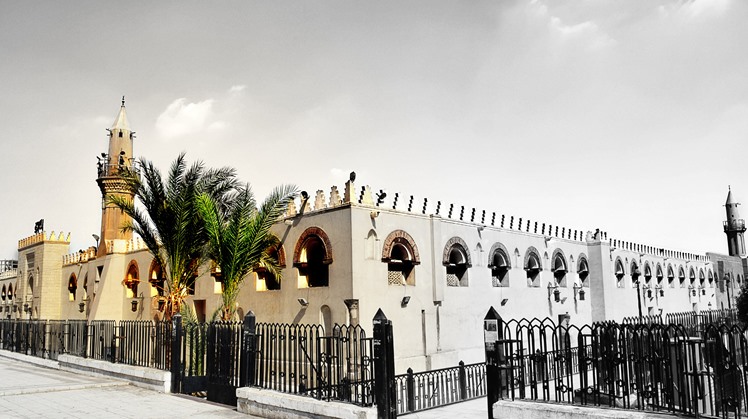One of the most prominent historical mysteries is the tomb of the Arab leader Amr Ibn Al-Aas, the conqueror of Egypt, during the reign of the Commander of the Faithful Omar Ibn Al-Khattab, may God be pleased with him, in the year 20 AH / 641 AD. Islamic history that spanned across several Islamic countries and empires.
Omar Ibn Al-Aas is Abu Abdullah, the son of Sayyid Bani Saham from Quraish, Al-Aas Ibn Wael Al-Sahmi, who was sent by Quraysh before his conversion to Islam to Abyssinia to ask the Negus to hand him over to the Muslims who migrated to Abyssinia to escape from the infidels and return them to Mecca to hold them accountable and turn them back from their new religion, but the Negus did not respond to him. After his conversion to Islam, he conquered Egypt after conquering the Romans and became its ruler after Omar Ibn Al-Khattab appointed him, and he remained there until his death.
It is historically proven that Amr ibn al-Aas was buried in Egypt, and it is said that he was buried - may God be pleased with him - in the Mokattam mountain in the direction of Faj, where people used to pass by when they went to the country of the Hijaz. He made his seed to the people of Paradise; A number of the Companions, Ahl al-Bayt, and other Muslims were buried there, and before that it was distinguished by its abundance of rivers, trees, and plants.
According to the book “The History of Omar Ibn Al-Aas” by Dr. Hassan Ibrahim Hassan, many Arab historians, including Abu Al-Mahasin, Ibn Qutaiba and Ibn Al-Zayyat in his book “The Car Planets in the Arrangement of Visitation” and Al-Damiri in his book “The Life of the Animals: Bab Al-Waal” state that Amr Ibn Al-Aas He was buried in Egypt and renovated at the foot of the Mokattam mountain in Al-Fakh district, and the people's way to the Hijaz was.
Some disagreed about his grave, and the author of the book “Egyptian Shrines” said that the tomb of Amr ibn al-Aas is west before Imam al-Shafi’i, and the place in it is called the graves of Quraysh.
While the author believes that the location of the grave of Amr ibn al-Aas must have been played by the hand of oblivion for centuries, so history remained in complete silence so that it is difficult to reveal the truth of this topic to uproot many of the moqattam stones, so that its location has almost no effect, in addition to Amr He himself used to say when death approached him: “And make a tooth of sand on the dirt, and do not put wood or stone in my grave,” which indicates that Amr’s grave is no longer a trace.
The book Hashyat al-Jamal on Explanation of the Method 1-8 part 3, written by Suleiman bin Omar bin Mansour Al-Ajili, explains that Amr bin Al-Aas, it was possible that they were buried at the foot of Mokattam with some of the companions who were buried in Egypt, in the side of the foot, where the people's way at that time was to Hijaz, which is I like that everyone who passes by this place should pray for him, and among those who may have been buried in Egypt are Abdullah bin Al-Harith, Hudafa Al-Sahmi, Abu Basra Al-Ghafari, and Uqba bin Amer Al-Juhani.
Grave
And agrees with the aforementioned narration, the historian Ibn Taghr Barada in his book “The Stars in the Kings of Egypt and Cairo 1-17 with Indexes Part 1” that the spot where Uqba bin Amer was buried, also contains Amr bin Al-Aas and the tomb of Abu Basra Al-Ghafari, where the dome that he demolished contains them. Salah al-Din al-Ayyubi then built it the usual building now, which is the dome and mausoleum of Uqba bin Amer in Mokattam.
While the book “Al-Mustadrak on Al-Saheehayn 1-5 with Al-Fahraes Part 3” written by Al-Hakim Al-Nisaburi mentions that Amr Ibn Al-Aas died on Eid Al-Fitr at the age of ninety-four years, and his son Abdullah prayed for him, and was buried in Mokattam in the year 43 AH.
 Wed, Oct. 12, 2022
Wed, Oct. 12, 2022